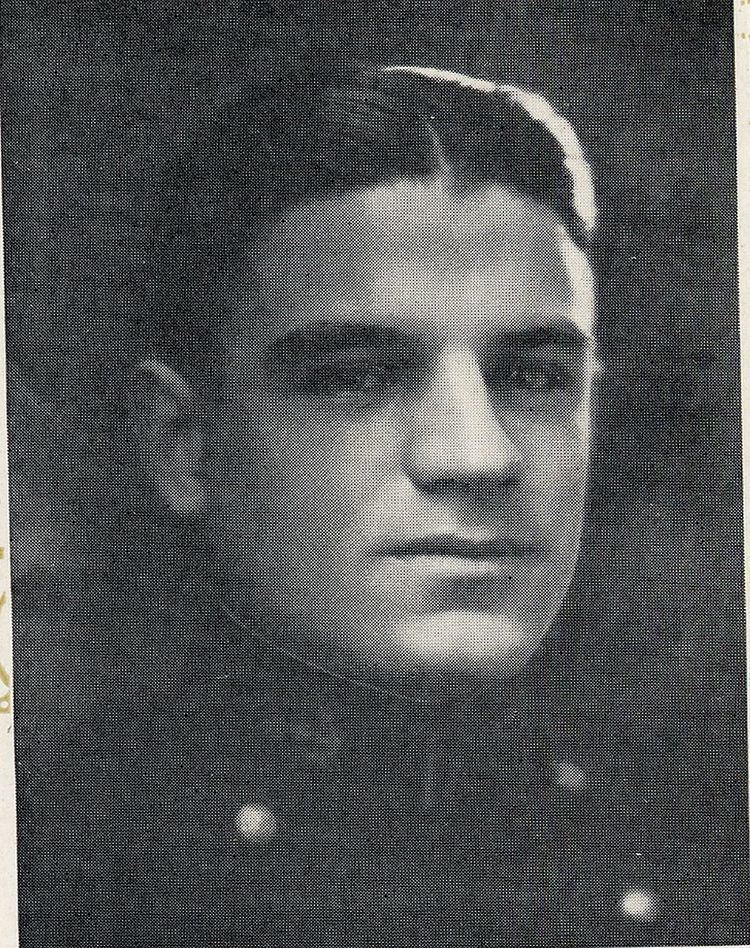Rank Rear Admiral | Years of service 1920–1955 Name Jose Cabanillas | |
 | ||
Born September 23, 1901Mayaguez, Puerto Rico ( 1901-09-23 ) Place of burial cremated and buried at sea Allegiance United States of America | ||
José M. Cabanillas (September 23, 1901 – September 15, 1979), was a Rear Admiral in the United States Navy who as an Executive Officer of the USS Texas participated in the invasions of North Africa and the Battle of Normandy (also known as D-Day) during World War II.
Contents
Early years

Cabanillas was born to José C. Cabanillas and Asunción Grau de Cabanillas in the city of Mayagüez which is located in the western coast of Puerto Rico. There he received his primary and secondary education. In 1917, at the age of 16, he was sent to Alabama to attend the Marion Military Institute. In the school he underwent a two-year preparatory course which prepared him for the United States Naval Academy.
Naval career
He graduated from the institute in 1919 and on June 16, 1920 received an appointment from Arthur Yager, the U.S. appointed governor of Puerto Rico from 1913 to 1921, to attend the United States Naval Academy. Cabanillas graduated from the Academy on June 4, 1924 and was commissioned an Ensign in the U.S. Navy. Prior to World War II, Cabanillas served aboard various cruisers, destroyers and submarines. Among the battleships that he served in were the USS Florida, USS Colorado and USS Oklahoma. From June 1927 to January 1928 he received instruction in submarines at the Submarine Base, New London, Connecticut, after which he served in the USS S-3 until May 1930. Cabanillas earned a Master of Science in June 1932 from Yale University.
World War II
In 1942, upon the outbreak of World War II, he was assigned Executive Officer of the USS Texas (BB-35). The USS Texas was the oldest remaining dreadnought, and was one of only two remaining ships to have served in both world wars at that time. On November 8, the Texas participated in the invasion of North Africa. by destroying an ammunition dump near Port Lyautey. Cabanillas also participated in the invasion of Normandy on (D-day). On June 6, 1944, his ship's secondary battery went to work on another target, Cherbourg, France, on the western end of "Omaha" beach. Cabanillas was awarded the Bronze Star Medal with Combat "V," for "meritorious achievement and outstanding performance of duty as Executive Officer of the USS Texas during the Invasion of Normandy and the bombardment of Cherbourg. His Bronze medal citation reads as follows:
"Taking over ship control in the conning tower after an enemy shell had destroyed the bridge, the primary control station, Captain Cabanillas rendered invaluable service to his commanding officer in the performance of the assigned mission..."
In 1945, Cabanillas became the first Commanding officer of the USS Grundy, which was commissioned on January 3, 1945. The Grundy helped in the evacuation of Americans from China during the Chinese Civil War. Under his command, the Grundy earned the following citations: China Service Medal (extended), American Campaign Medal, Asiatic-Pacific Campaign Medal, World War II Victory Medal and the Navy Occupation Service Medal (with Asia clasp). In December 1945, he was reassigned to Naval Station Norfolk located in Norfolk, Virginia, as Assistant Chief of Staff (Discipline), 5th Naval District.
Korean War
In July 1949, Cabanillas was transferred to Naval Station Orange, located in Orange, Texas where he served as Commanding Officer.
On July 1950, he became Commander of the USS Dixie, a destroyer tender in the Pacific. During the Korean War he provided firing cover to the U.S. Marines involved in the Inchon invasion. In 1951, Cabanillas was reassigned to the staff of the United States Pacific Fleet in Hawaii. In 1953, he was transferred to the fifth Naval District in San Juan, Puerto Rico as Chief of Staff.
Later years
Cabanillas retired from the Navy in 1955 and moved to Richmond, Virginia. In 1956, Cabanillas made use of the benefits of the G.I. Bill and studied law at the University of Richmond School of Law. He passed the Virginia Bar at the end of his second year. He served as law librarian at the University for 6 years and then joined a Richmond law firm.
Cabanillas died on September 15, 1979 at the Hunter Holmes McGuire VA Medical Center in Richmond. He was the first Puerto Rican to make rear admiral in the US Navy, albeit a tombstone promotion. He was cremated and buried at sea with full military honors.
Awards and recognitions
Among Rear Admiral José M. Cabanillas' decorations and medals were the following:
Badges:
